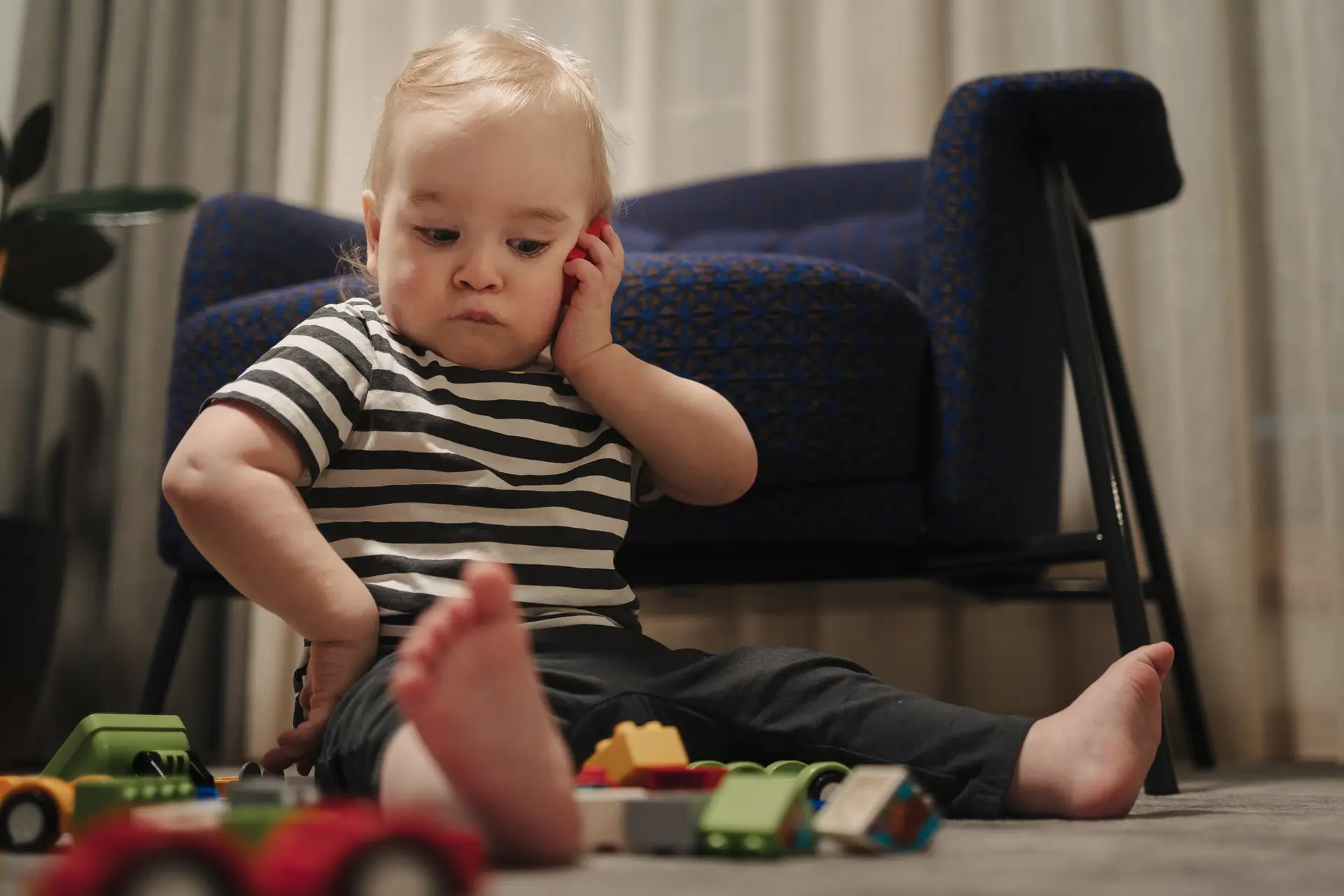Indoor family photography doesn’t require expensive studio lights or professional photo equipment.
With a few simple tricks using window light and basic camera settings, your ordinary rooms can become mini studios for beautiful natural light family photos.
This guide shows you exactly how to photograph kids indoors using what you already have at home.
Why Indoor Photography Feels So Hard (And Why It Doesn't Have To Be)
Most parents struggle with photography at home without flash because indoor lighting is tricky. Overhead lights create harsh shadows, different bulbs make weird color casts, and by the time you get your camera ready, your kids have moved to the darkest corner.
But indoor spaces have one amazing advantage: windows. Natural light from windows is soft, flattering, and completely free. Once you learn to see and use this light, everything changes.
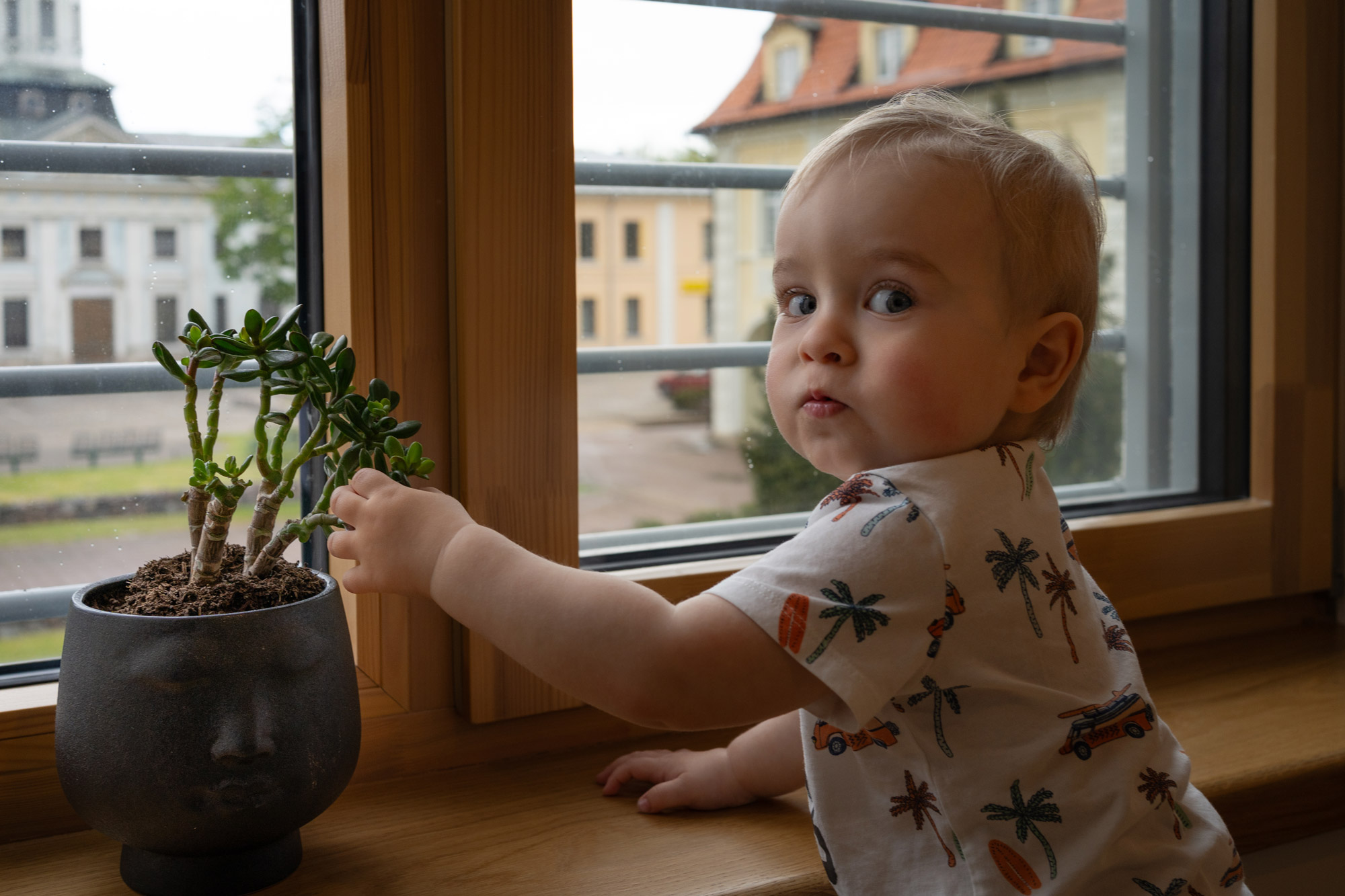
Finding the Best Light in Your Home for Family Photos
Walk around your house and look at each window. Which rooms get the most light? Which windows are biggest? This simple exercise will transform how you see your home.
Morning light comes from the east and tends to be cooler and softer. Afternoon light from the west can be warmer and more golden. North-facing windows give consistent, even light all day. South-facing windows get the brightest, most direct sunlight.
Pay attention to how light moves through your home during different times of day. Take some test shots. You’ll quickly discover your home’s sweet spots for indoor family photography tips.
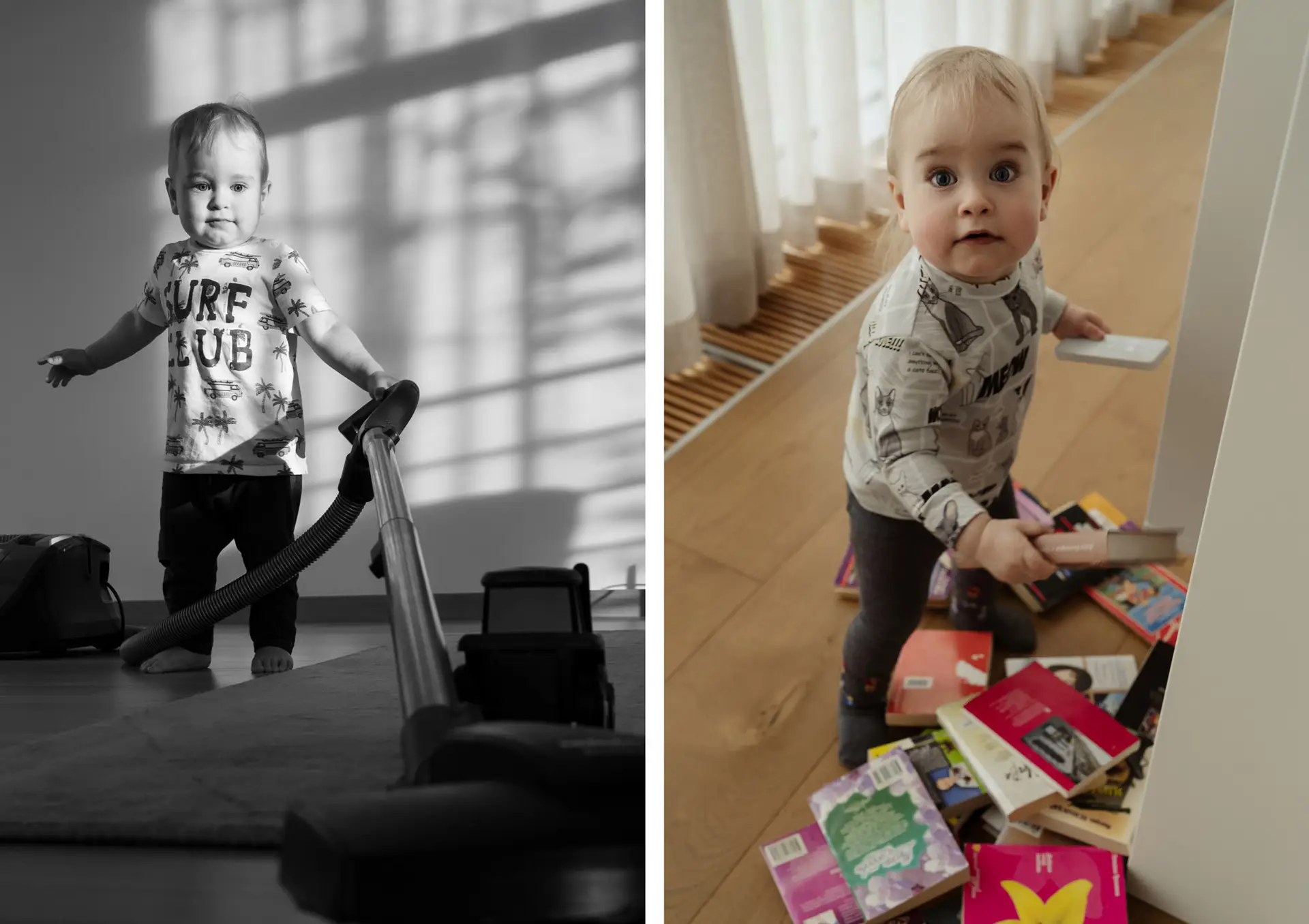
Setting Up Your Space for Natural Light Family Photos
Once you’ve found your best window, set up a simple shooting area. Move any clutter out of the frame. Push furniture back to create a clean background. You want the focus on your family, not the pile of laundry on the couch.
Position your subject about 3 to 6 feet away from the window. Too close and the light will be too harsh on one side. Too far and you lose that beautiful window light.
Think about your background too. A plain wall works great. A bookshelf can add interest without being distracting. Keep backgrounds simple so your kids remain the star of the photo.
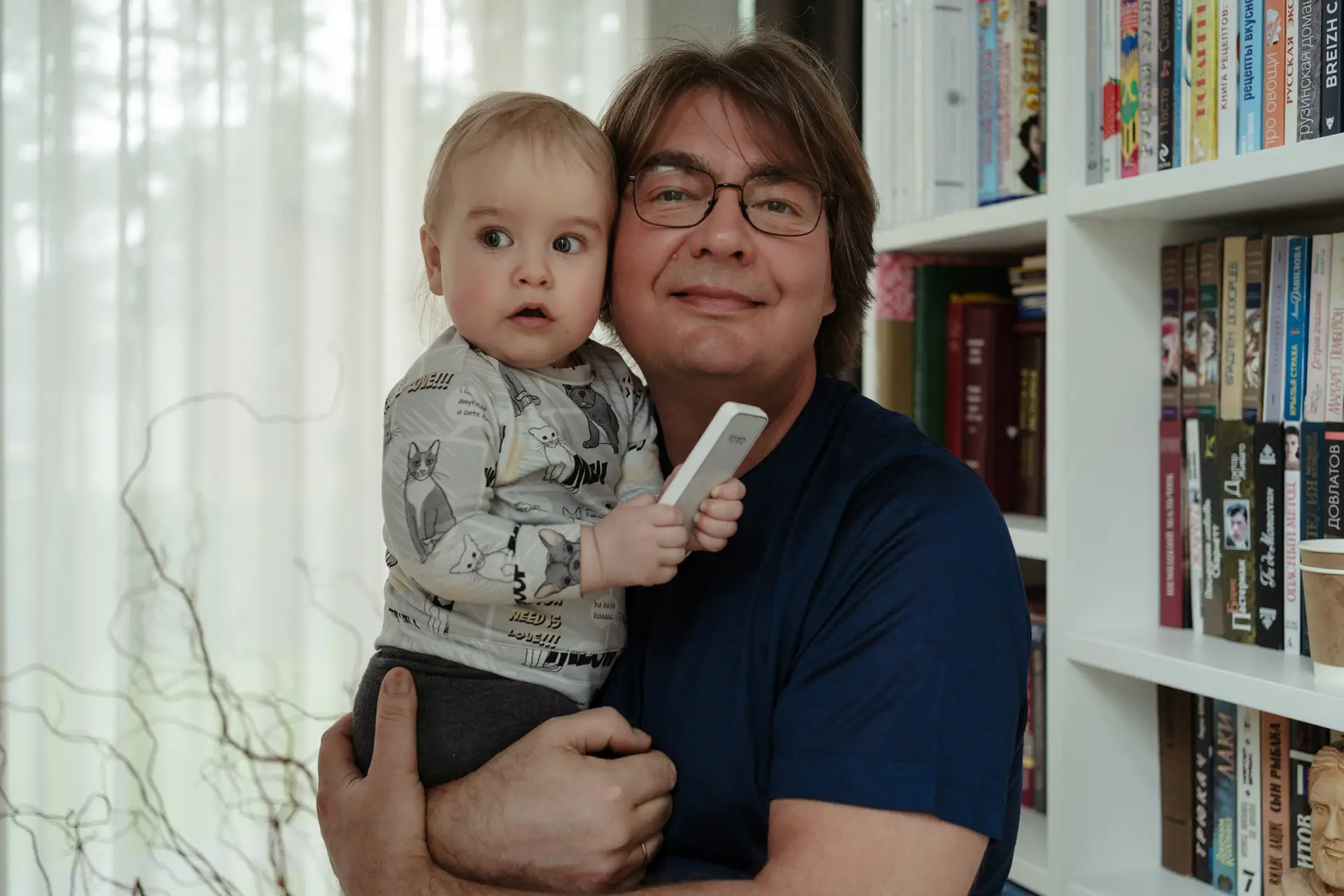
Types of Window Light and How to Use Them in Indoor Family Photography
Side Lighting happens when light comes from the side of your subject. This creates depth and dimension in your photos. One side of the face is lit while the other has gentle shadows. Position your child so the window is to their left or right. This technique works beautifully for both portraits and action shots. Learn more about this in this detailed guide to side lighting in photography.
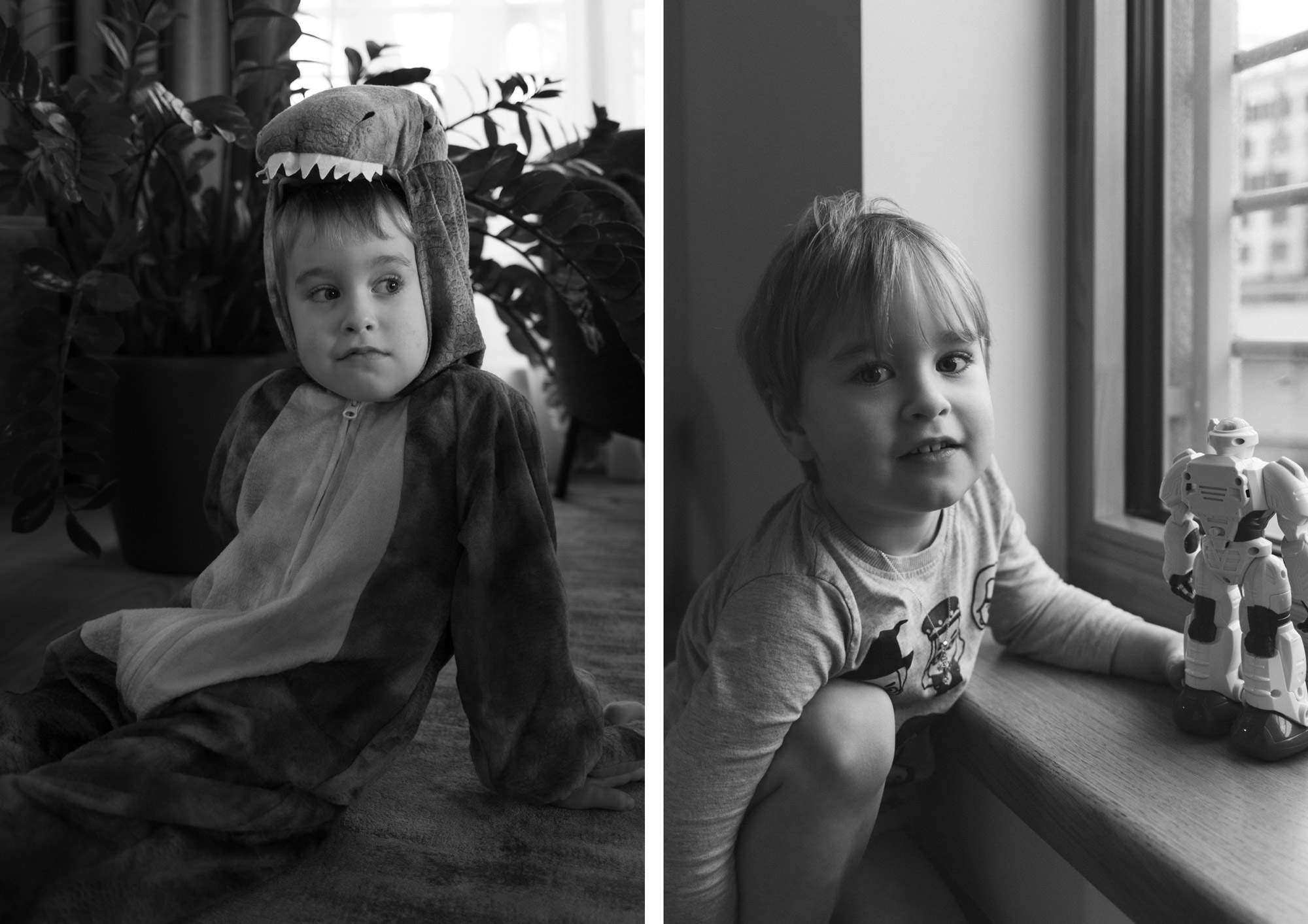
Front Lighting means the window is behind you, shining directly on your subject. This creates even, soft light with minimal shadows. It’s the easiest type of light to work with and great for beginners.
Backlighting is when the window is behind your subject. This creates stunning, dreamy photos with a beautiful glow around your child. Just be careful not to let them become a dark silhouette.
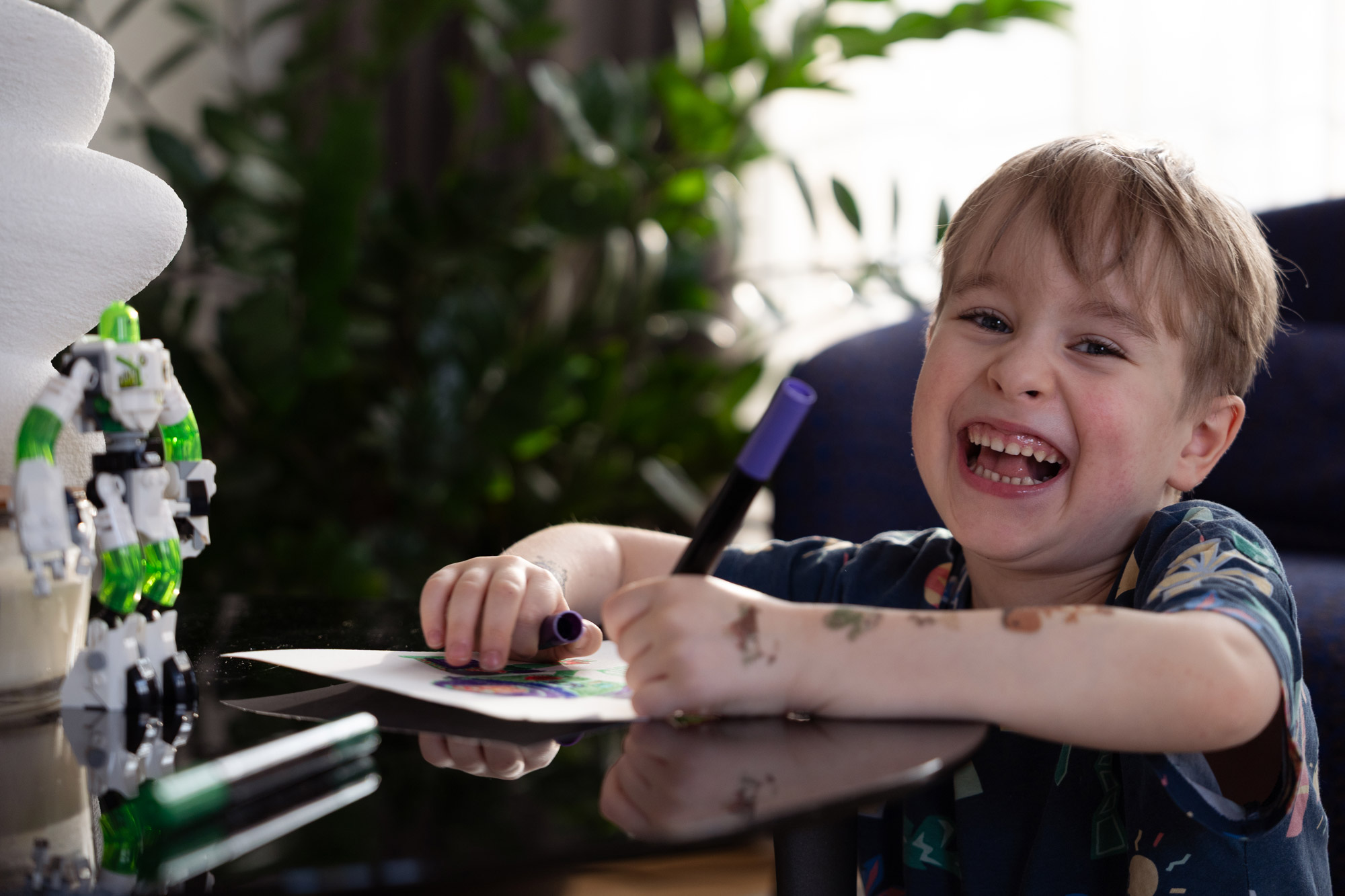
DIY Reflectors: Bouncing Light Like a Pro
Professional photographers use reflectors to bounce light back onto their subjects. You can do the same with items you already have:
- White poster board – costs a few dollars and works perfectly
- White bedsheet – drape over a chair or have someone hold it
- White foam board – lightweight and easy to position
- White wall – use the wall itself as a natural reflector
- Aluminum foil wrapped around cardboard – for stronger, more dramatic fill light
Place your reflector opposite the window to fill in shadows. If light is coming from the left, put the reflector on the right side. This bounces light back onto the shadowy side of your child’s face.
Camera Settings for Indoor Family Photography Without Flash
Indoor photography requires different settings than outdoor shooting. The main challenge is less light, which means adjusting three things: aperture, shutter speed, and ISO.

Your Essential Indoor Settings:
- Aperture: Set to f/2.8 or f/4 (low numbers let in more light and create nice blurry backgrounds)
- Shutter Speed: At least 1/125th second for still kids, 1/250th or faster for active kids
- ISO: For bright daytime conditions with plenty of natural light indoors, start with ISO 100-200 to keep your images clean. If the room is darker, don’t hesitate to raise your ISO to 800, 1600, or even 3200. While higher ISO values do introduce some noise, most modern cameras handle it very well, and you can always reduce noise later in post-production. Remember, a slightly grainy photo is far better than one that’s too dark.
- Mode: Use aperture priority mode if available – lets you control aperture while the camera handles other settings
For a deeper understanding of how these settings work together, check out this comparison of aperture priority vs shutter speed priority modes. And if you’re photographing children specifically, this guide on best camera settings for child photos breaks everything down.
Sharpen Your Photography Skills in One Afternoon
Download my free guide with 10 expert techniques that took me years to master. You’ll discover the simple shifts that separate amateur shots from frame-worthy photos.
Join 300+ photographers already leveling up their skills
Dealing with Mixed Lighting
Real homes have multiple light sources creating different colors of light. The easiest solution is to turn off all artificial lights and use only window light. This gives you consistent, natural-looking color.
If you must use artificial lights, try to match them. Use all warm-toned bulbs or all cool-toned bulbs. Better yet, invest in daylight-balanced bulbs that match window light color.
Creating Depth with Doorways and Furniture
Doorways make excellent natural frames for your indoor family photos. Position your child in a doorway with good light. The door frame creates a border that draws attention to your subject.
Furniture can also add layers to your composition. Shoot through chair backs, over couches, or between table legs. These elements in the foreground create depth and make photos more interesting.
This photo shows how everyday furniture and play areas create interesting compositions:
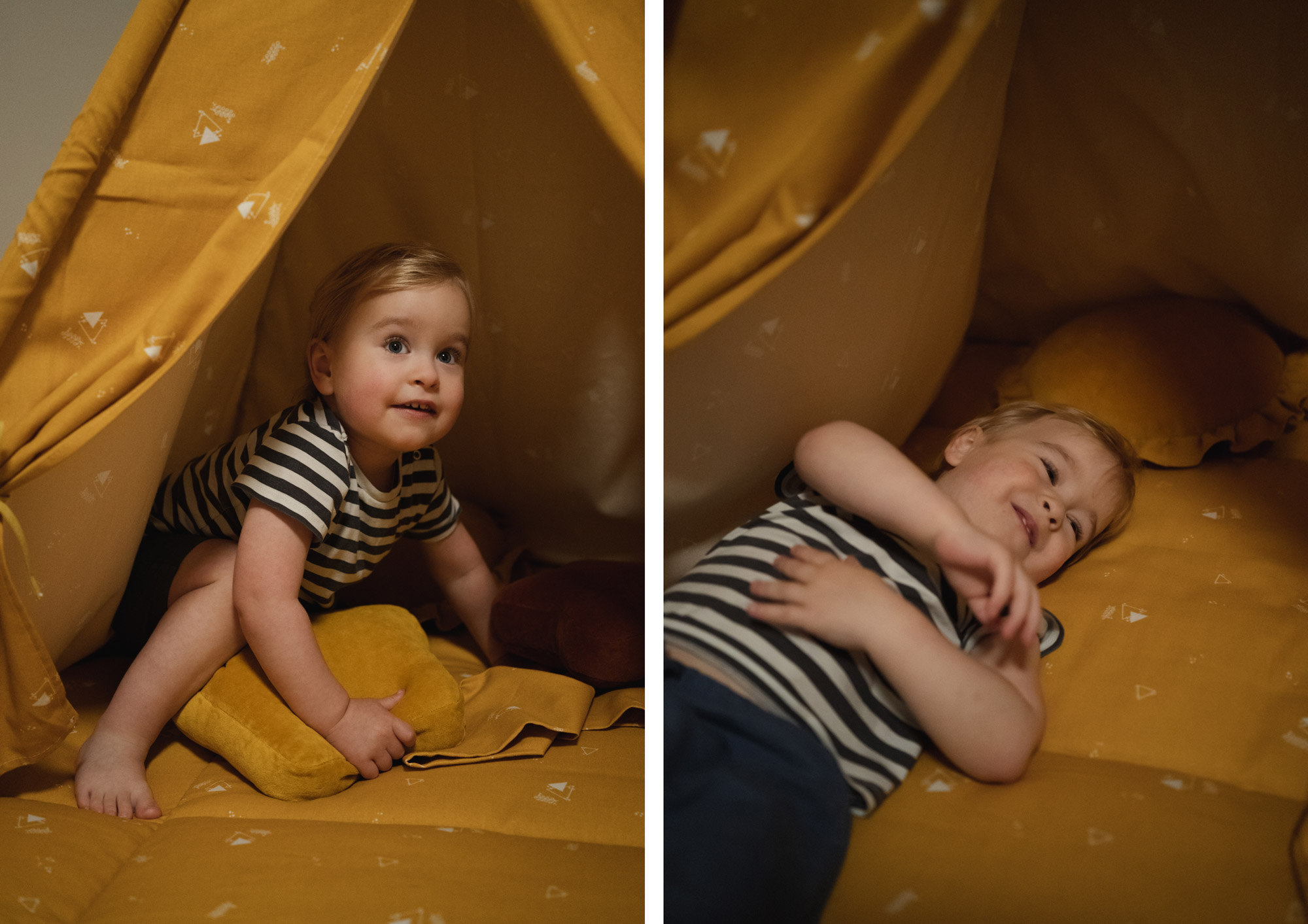
Capturing Natural Family Moments vs. Posed Shots
The beauty of shooting at home is that kids are relaxed and acting naturally. Document what they’re actually doing – playing with toys, reading books, drawing, or being silly.
Keep your camera nearby and ready. Get down on their level. Shoot from their eye height rather than standing over them. Take lots of photos. You might shoot 50 to get 5 great ones, and that’s normal.
These images show the power of capturing natural, unposed moments:
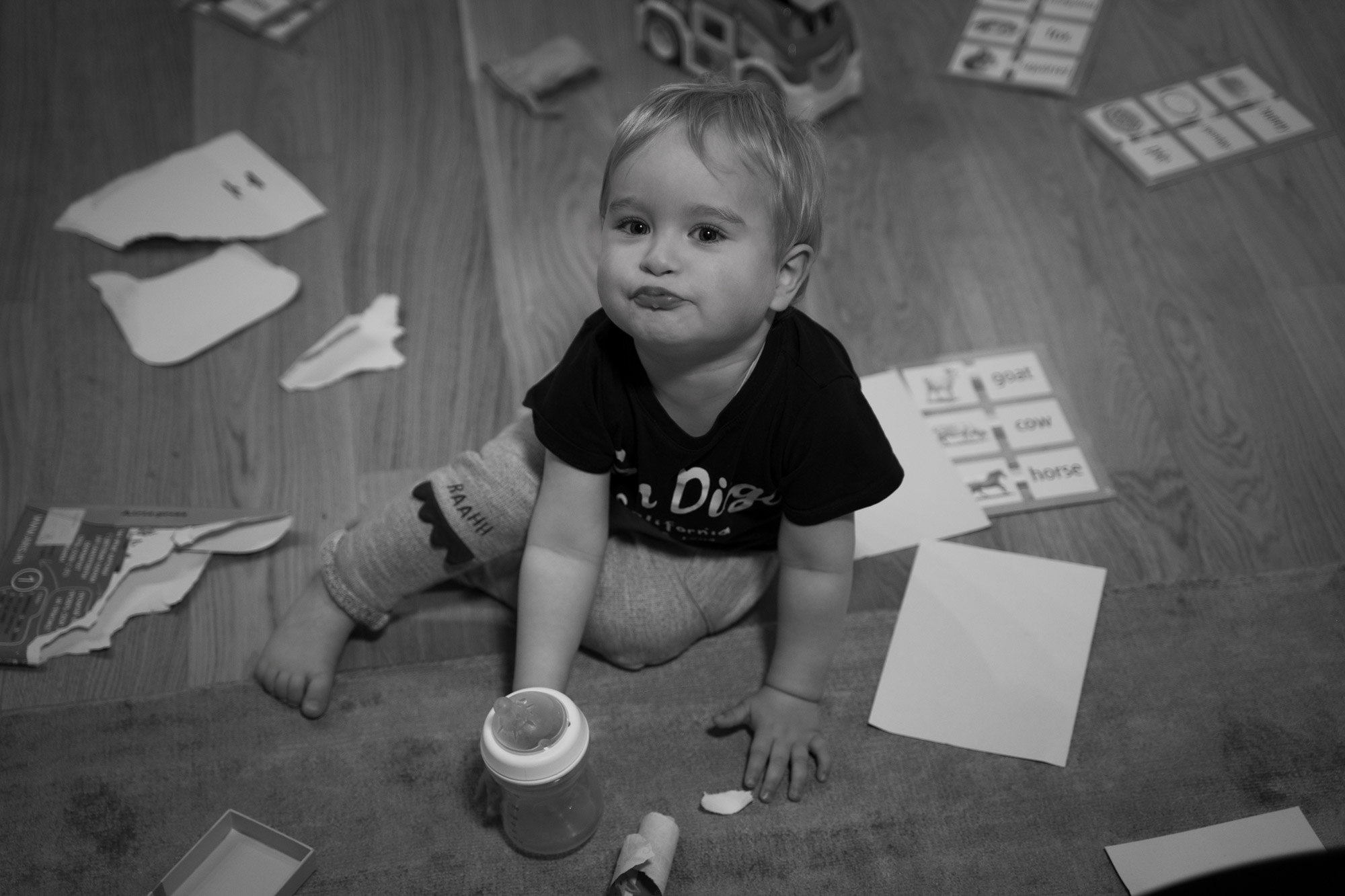
Working with Active Kids: Tips for Sharp Photos
Kids don’t sit still. But you can work with their energy instead of fighting it.
Give them something to do near your window light. Coloring, building blocks, or playing with favorite toys keeps them in one spot while giving you natural expressions.
Use continuous shooting mode (burst mode). Hold down the shutter button and your camera fires off several shots. One is bound to be sharp with a good expression.
Increase your shutter speed to freeze motion. For walking or playing, use at least 1/250th. For running or jumping, go to 1/500th or faster.
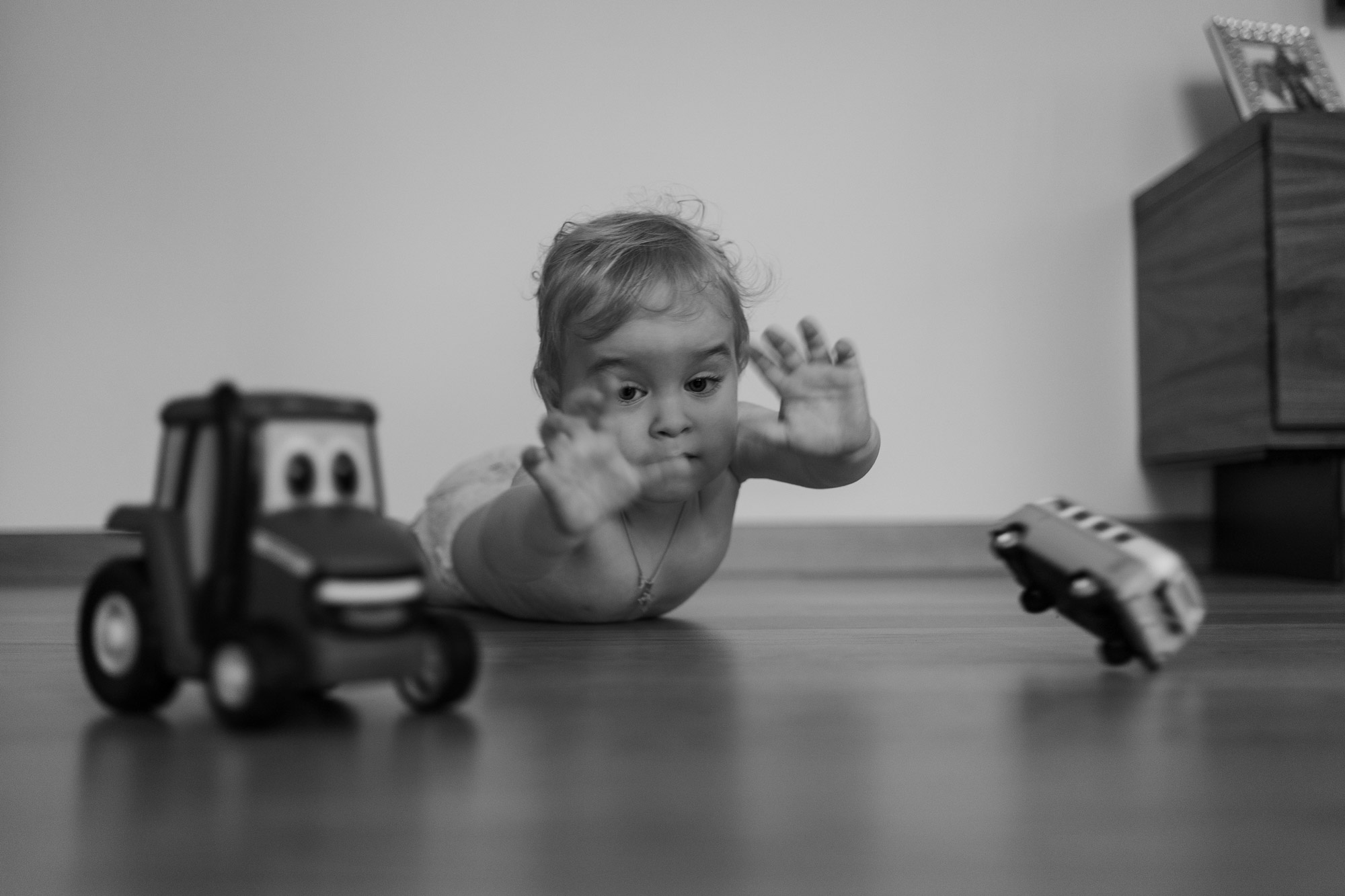
Common Indoor Photography Mistakes to Avoid
Even experienced photographers make these mistakes. Here’s how to fix them:
- Using built-in flash – Creates harsh, flat lighting and red eyes. Turn it off and use window light instead
- Cluttered backgrounds – Scan your frame before shooting, and move distracting items
- Not getting close enough – Fill your frame with your subject, you don’t need to show the entire room
- Forgetting to adjust settings between rooms – Each room has different light levels, so adjust accordingly
- Forcing photos when kids are tired or upset – Wait for better moments when they’re happy and engaged
Your Indoor Photography Action Plan
Start simple with just one window and one activity. Master that setup before trying to photograph kids running around the whole house.
Create a shot list of moments you want to capture: morning routines, play time, bath time, bedtime reading. Schedule regular photo sessions, even if just 10 minutes.
Most importantly, have fun. Your kids will sense if you’re stressed about getting the perfect shot. Relax, enjoy the moment, and let the photos happen naturally.
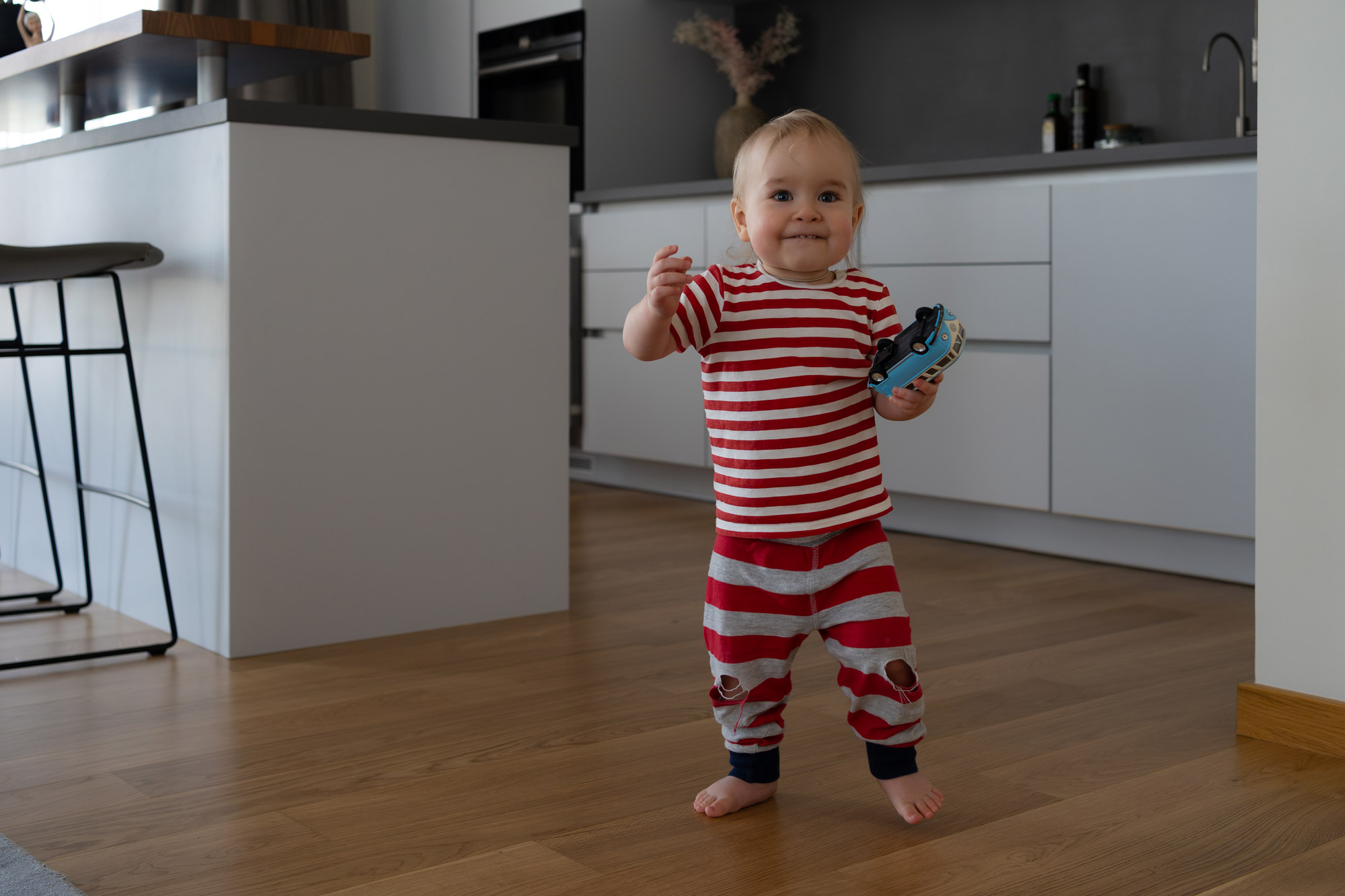
Indoor Family Photography: Final Thoughts
Natural light family photos at home are completely achievable without expensive equipment. Your windows provide beautiful light. Your everyday rooms become perfect backdrops. Your camera has the settings you need.
The secret is learning to see light, understanding basic camera settings, and practicing regularly. These indoor family photography tips work for any camera, any home, and any family.
Start today by identifying your best window light. Try one technique from this guide. You’ll probably surprise yourself with what you can create right at home.
For more comprehensive guidance on capturing your family’s story, check out this family photography guide that covers various aspects of family photography.
Your family’s everyday moments deserve to be documented beautifully. With these simple techniques for photography at home without flash, you can capture authentic, meaningful photos that your family will cherish forever.

